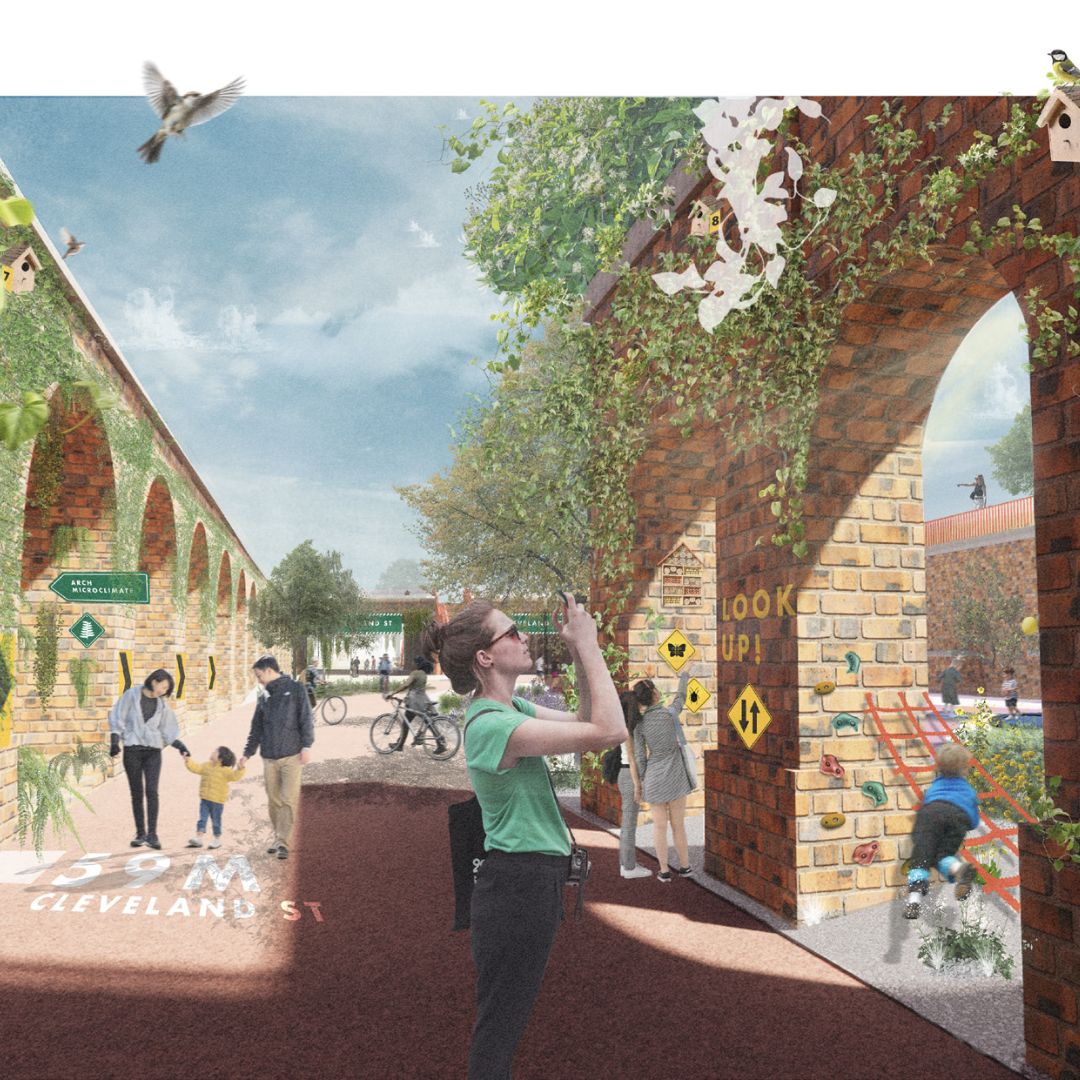Get updates from The Developer straight to your inbox Yes, please!
Dock Branch, Birkenhead, for Wirral Council, with OPEN, Mott MacDonald, BB Heritage and Walker Sime

The transformation of the Dock Branch railway line is a key part of the Birkenhead 2040 framework, which plans to provide 21,000 new homes as well as 900,000sqm of modernised commercial space including industrial space and car storage. The £24.6m already secured for the project include provisions for the transfer of seven bridges and one tunnel into council ownership. The railway line will become a 800m linear park to combine nature and communal space.
Who is on the project team? (designer, consultants, etc)
OPEN – Landscape Architect and Lead Designer
Mott MacDonald – Engineering, Town Planning and Ecology
Walker Sime – Project Management and Cost Consultancy
BB Heritage Studio – Heritage Consultant
Please describe your approach to this future public realm. How does it knit into, and serve the needs of the wider area?
After decades of use, the Dock Branch Line is unused, inaccessible and has been recolonised by vegetation, enveloping much of the corridor, its historic arches and rail lines. Our approach, through thoughtful design and management, is to create a mosaic of landscapes and habitats; connected to people; and which utilise 21st century technology to celebrate the surrounding heritage. Our aim for Dock Branch Park is to rebalance and establish a new relationship between nature, people, and heritage. Dock Branch Park will be a new kind of public space, demonstrating ecologically regenerative response to the climate challenges we all face. This will be a space fit for a greener future for Birkenhead. An accessible active travel route is integral to the linear park, creating an accessible and connected environment which links the surrounding street grid, walking and cycling networks, local bus and train stations and the proposed mass transit system. Dock Branch can be transformed from the most significant barrier to movement in central Birkenhead to its most connected movement corridor. The impact will be transformative for active travel options across the town centre tying together a range of currently disparate attractions and emerging regeneration areas. A Locally Inspired Parkland Vision Dock Branch will draw influence from the same landscapes that shaped Birkenhead Park, but within a new paradigm of thinking. Readdressing the balance between human intervention and the natural environment; rethinking the form of an urban park; and moving away from the static manmade environment, detached from its natural surroundings.
Describe the social impact of the project: How will it contribute to the economic, environmental and social wellbeing of the wider place and its community?
Dock Branch will connect neighbourhoods, promoting active transport and encouraging healthy lifestyle and well-being. The park will provide a place to meet, a place to learn, and a place to engage with the town’s industrial past and sustainable future. Dock Branch sits at the heart of the Birkenhead 2040 framework which plans to deliver 21,000 new homes and 6,000 jobs. The park is the catalyst around which the Dock Branch Neighbourhood masterplan is centred. The vision is for a healthy, fun and inclusive place which raises the social foundation of the community. The character of the park balances the needs of nature and people in a way which is mutually beneficial to both. This sets the precedent for the evolution of the surrounding neighbourhood character, rewilding the urban context, creating streets and spaces which form a network of green and blue infrastructure designed to respond to the climate and biodiversity emergencies. The park will act to mitigate the urban heat island, air pollution and surface water flooding, as well as enhancing biodiversity and providing access to nature. Work undertaken by Wirral Council highlighted the social problems faced by the community, including the growing problem of social isolation and the resultant impact on health and well-being. The park will provide opportunities for social interaction, passively and through participation. Initiatives such as the Wirral Council-led ‘Birken Ed’s Place’ and the establishment of the Dock Branch Community Panel have informed the design process and already helped forge links with wider community groups.
What is the sustainability strategy for the project? How will the carbon use and material impact of the development be mitigated?
Dock Branch is an intrinsically sustainable development; making use of a redundant space; bringing existing structures back to life; creating access to nature; and promoting active healthy lifestyles. The design of the park targets a minimum of 10% Biodiversity Net Gain, retaining and enhancing existing vegetation and creating habitats which provide an ecological stepping stone within the wider context of Birkenhead. Dock Branch will create space for both people and nature, promoting and facilitating opportunities for learning in the natural environment. The implementation and management of the park will embrace Wirral’s existing initiative of reusing the timber from felled trees in public parks, for example in the creation of timber seating and natural play elements, as well as within woodchip paths and bark mulch. The park maintenance will provide opportunities to implement urban forestry principles growing and using trees for specific purposes. The specification of paving and street furniture prioritises locally sourced materials, products which are robust and fit for purpose ensuring a long lifespan and which can be reused, repurposed, or recycled in the future. The design embraces a holistic approach to water management, incorporating connected nature-based SuDS elements to provide 635m3 of water surface attenuation to ensure no flooding occurs during storm events including the 1 in 100 climate change event. This approach reduces the reliance on new below-ground drainage infrastructure whilst promoting biodiversity. The retention and creation of native planting will reduce the requirement for watering, as such the park has no proposals for active irrigation systems.
Sign up to our newsletter
Get updates from The Developer straight to your inbox
Thanks to our organisation members
© Festival of Place - Tweak Ltd., 124 City Road, London, EC1V 2NX. Tel: 020 3326 7238